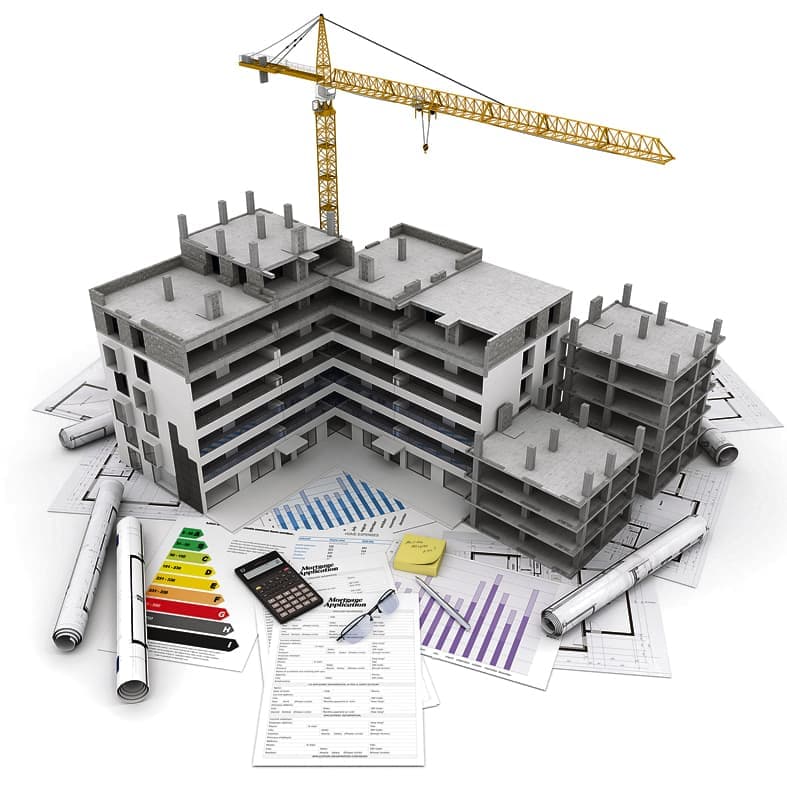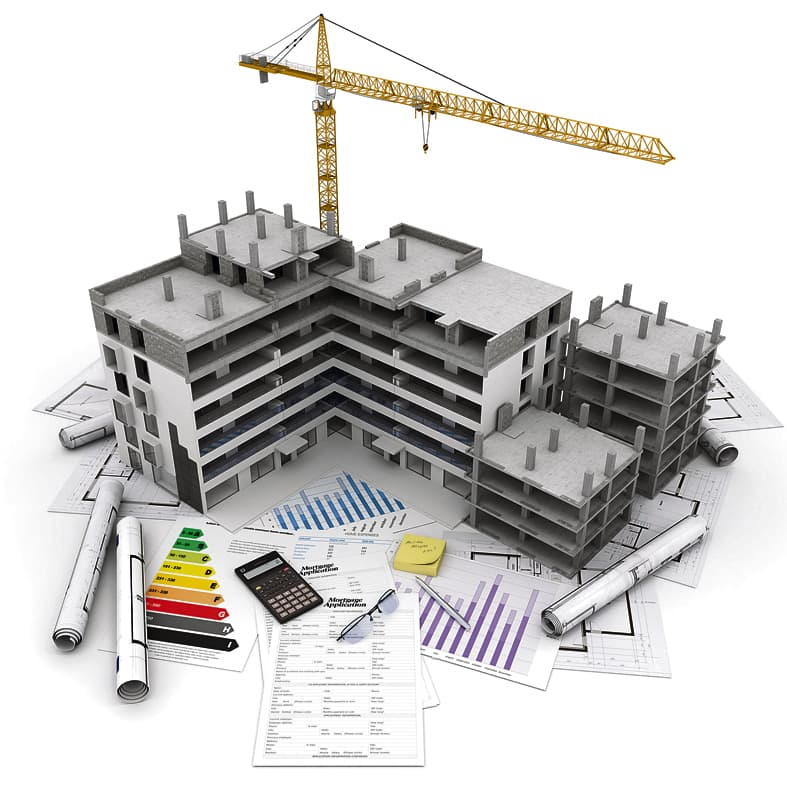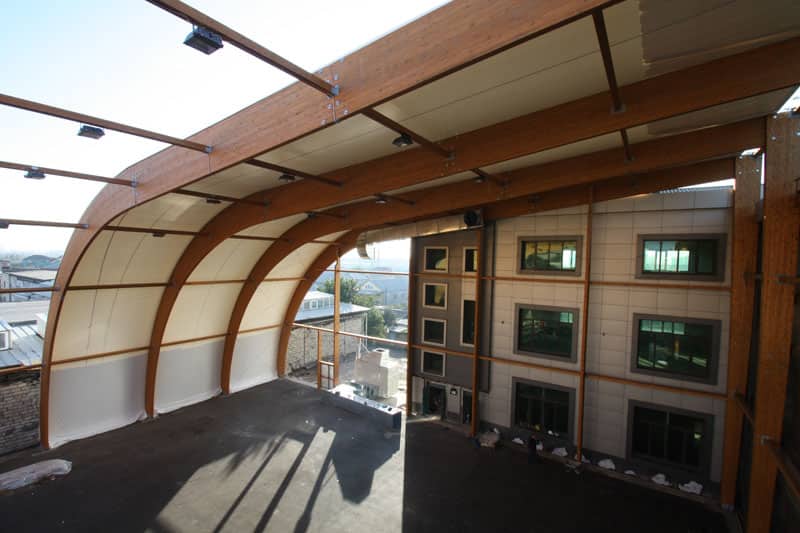
The design of any structure is the fundamental soul of man made creation. The design is the process of imagining and planning the creation of objects. It is a vast concept and, its meaning can vary from one field to another and from one object to another. So, here we have discussed the meaning of design in the field of structural engineering only, which is structural design.
Selection of Materials and Technology
Structural design is that part of engineering in which, Structural engineers create “bones and muscles” that create the form and shape of a man made structure. It is a highly specialized area of civil engineering. The structural design is important as structures are intended for human habitat and related uses for different human activities with structural safety not only for its own sake but for safety and security of human life, as it all depends on the adequacy of the structure.
Structural Design
The design process of any structure starts with the selection of materials vis a vis construction technology. Hence, the process to find out the safe, durable and economical specifications of the structure including materials, technology, geometry, the size of structural members sufficient to carry loads of structure during the life period of the structure is known as structural design.

If the structure is not designed properly including proper selection of materials and technology or if the structure that we have designed is subjected to excessive load than specified limit the device will probably fail to perform its intended function with possible damage both to structure and life, including complete damage.
Evaluation of Structural Design
The history of structural engineering also contains the records of collapse and failure of structures and then of course studies and research on that collapse and failure of the structure. Therefore, the structural design requires careful study. The modern meticulously designs have perhaps evolved out of this study combined with sophisticated calculation tools in forms of computers where detailed mathematical analysis and uniform calculation have become possible.

The role of the structural designer is very important because the safety of the human life depends on it, for all throughout the life of the building.
Importance of Structural System
There can be different structural systems like framed structure, load bearing structure etc. In the framed structure it can be either steel framed, RCC framed, wooden framed etc. The structure is made of various structural components (foundation, wall, beam, column, slab, etc.). These structural components are made from different types of materials (RCC, wood, brick, steel, or other material etc.). So, the design process starts with the selection of material and technology both, and of course the structural system, which is core and most important.
Also Read:
What is One-way slab?
What is Two-way slab?
Therefore, it is essential for a structural engineer to have knowledge regarding the properties and behavior of different materials which we are going to use in construction. The choice of material depends on local availability and cost, while technology will depend on the availability of skilled manpower, and plant and machinery needed.

Once the selection of materials and technology is done, process is to find out cross-sectional dimensions including its framing and deciding load path for given loads.
Structural engineers must have knowledge about the techniques of structural analysis to apply them successfully. Structural engineers need to understand and visualize the stability and strength of the structure.
Process of Structural Design
Detailed structural design includes the determination of the strength and stability of the structure to be built based on the physical requirement of the building. It also includes an understanding of the structural performance.
The Structural Design Process Determines:
- The geometry of the structure
- Structural framing both horizontal and vertical i.e. load path
- The most suitable dimensions of different elements
- Details of the structural elements and connections/joints
- Methods and technology of construction
The structure has to be designed for a certain life.
Importance of Codes
The process of design requires not only imagination and conceptual thinking but it basically requires the knowledge of basic mechanics including physics and chemistry of materials. And also, sound knowledge of practical aspects such as basic mechanics, recent design codes, and bye-laws which provide the guideline for the safe structural design. The codes also provide legal support. If a structure fails due to faulty construction or by using bad materials, the code can protect the designer from any responsibility if any, only if he/she followed all the guideline of the design codes. It is important that any structure to be constructed must satisfy the need and efficiency for which it is intended and must be durable for its desired lifespan.
Thus, the design of any structure is categorized into two types
- Functional Design
- Structural Design
01. Functional Design
The structure to be constructed should serve basic purpose for which it is to be used, this means that the structure must be capable of giving protection to the occupants from the weather (heat, rain, and cold), natural hazards (flood, earthquake, and storm), noise, animals etc. It means that it must be capable of giving safety to the structure as well as to occupants from all the aspects. The structure must remain stable during all-natural hazards like earthquake, flood, cyclone etc. The structure must also not cause feelings of unsafeness to the occupants.
The design of structure should be done in such a way that it gives a pleasant look. The building must give a pleasant environment inside as well as outside.
The functional planning of a building also includes the proper arrangements of the room to satisfy the need of the client, lighting, good ventilation, unobstructed view in case of a community hall, theater etc. Once the functional design of the structure is done, the structural design process starts.
02. Structural Design
The design of a structure involves its study from the viewpoint of its strength and serviceability. This means that structure is in that condition in which it is still considered as useful. In structural design, for the given load, the geometry is checked, assured and approved. It is a process of finding out whether the selected section would be able to bear the different loads without failure, i.e. collapse, damage, and even deflection, or vibration.

Following steps are included in the structural design:
- Structural Planning and deciding load path both vertical and horizontal
- The process of finding out forces and computation of reaction, moment deflection, rotation etc. (Structural analysis)
- Design of Member (geometry, size and shape of all the member)
- Joint Detailing
- Detailing, Drawings for execution with notes and sequence of construction
In the structural design once reactions are known which we get from the analysis we start the design process. We check whether the selected geometry and assumed dimension and size fulfills the design load criteria or not. If not then, we change the dimensions of the element and redesign it. The process is continued that till the design criteria are totally fulfilled i.e. stresses in member do not exceed permissible limits and permissible deflection etc. In brief, the cross sections are assumed and a dead load is calculated first. Then after analysis and finding exact reactions, the members are checked to see that they do not exceed permissible stresses.
It also includes the design criteria of the joints (Beam column junction) whether fixed joint or hinged joint etc. All the elements are checked for its load resisting capacity i.e. stress of different types i.e. flexure, direct shear etc., strain, deflection, rotation etc. If it exceeds permissible limits it has to be redone again and again until it falls within the permissible limits as per codes of design. The role of the structural designer is to ensure the safety, stability, and performance of the structure for its designed life.
The main objective of structural design is to produce a structure which is capable of resisting all applied loads and provide basic needs to occupants without failure during its lifespan. And also, to create the structure with acceptable safety and serviceability under the effect of the relevant loads and actions during the lifetime of the structure. So, structural design basically aims at providing the strength, stability, serviceability, safety, and durability of the structure during its intended life without failure, with minimum repair and maintenance.
Must Read:
What is Substructure in a Structural System?
Understand what is superstructure of your house
Difference Between RCC frame and Load Bearing Structure
Difference between Reinforced Concrete & Steel Framed Structure
Image Courtesy: Image 1, Image 3 – archiexpo




































